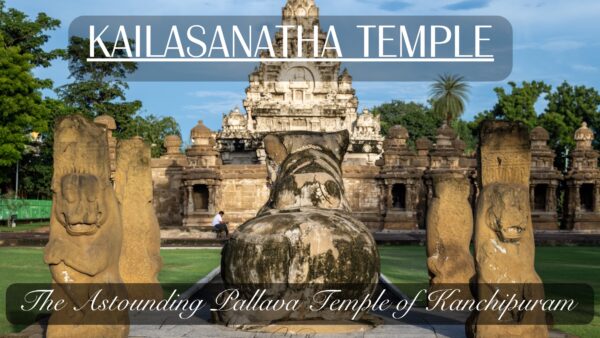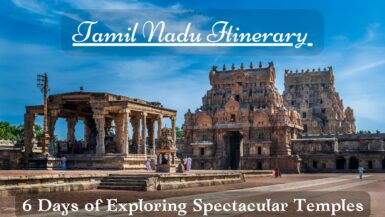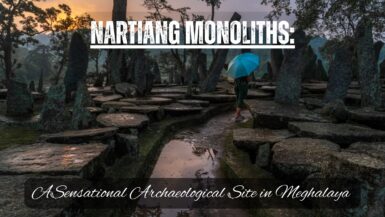There is no dearth of temples in Kanchipuram, otherwise famous as the “city of thousand temples”. Among this plethora of temples, the Kailasanathar Temple stands out due to its magnificence and brilliant architecture. It is the oldest temple of Kanchipuram, which eventually became a trendsetter for other similar temples in southern India. It was the most fully realised Pallava monument and regarded among the largest Hindu temples in India at the time of its construction. Since its inception, it has enthralled the patrons and pilgrims alike. Needless to say, we were no exception either. We were enamoured so much by the Kailasanathar Temple that we decided to dedicate a separate blog to it.
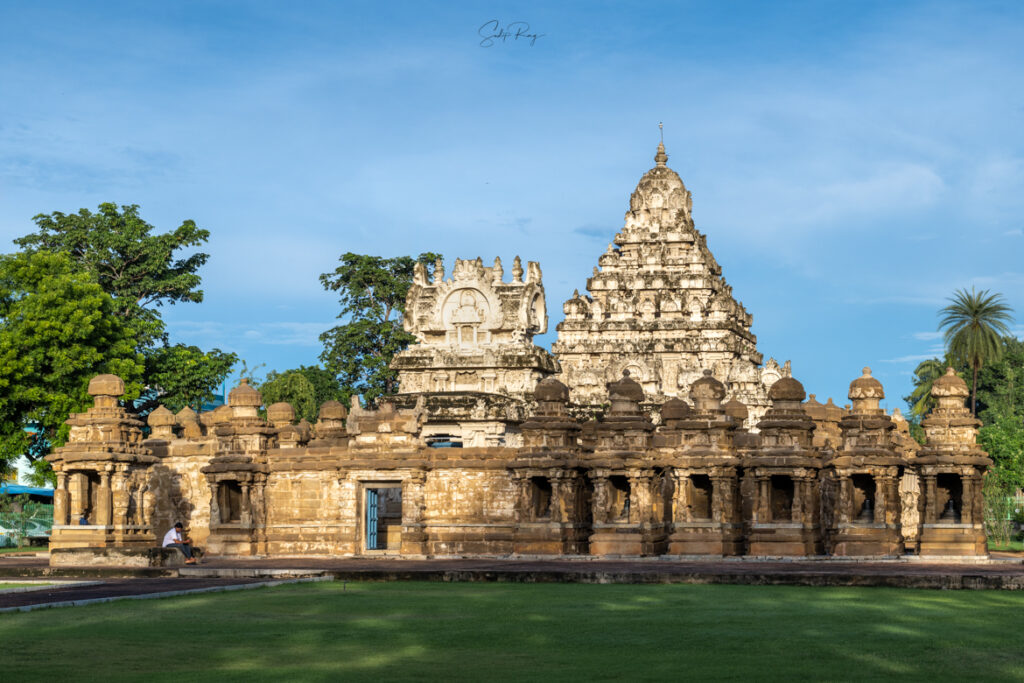
Table of Contents
Who built the Kailasanathar Temple:
Dedicated to Siva, this captivating temple was built by Narasimha II Rajasimha in 685 – 705 CE. Hence, the main shrine is often called Rajasimhasvara. Rajasimha was an ardent follower of Saiva Siddhanta and among the ‘arupattumuvar’, the 63 dedicated servants of Siva. He also built other Siva temples in Kanchipuram, such as Muktesvara and Matangesvara. Rajasimha’s queen, Rangapataka, also collaborated with her husband in constructing the Kailasanathar Temple.
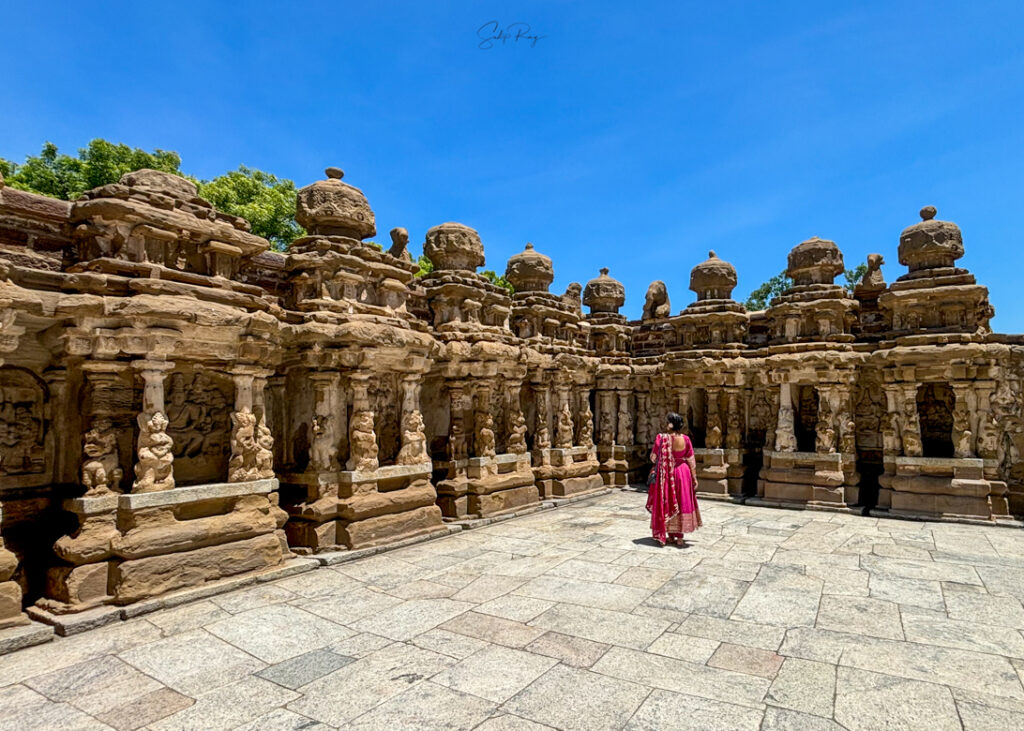
Another temple for Siva was commissioned inside the same complex by Mahendravarmana, Rajasimha’s son and heir who sadly predeceased him. This shrine is called Mahendravarmesvara.
Structure of the Kailasanathar Temple:
Oblong and east-facing, the Kailasanatha Temple is unique in plan and seldom found in other Pallava temples. It is built of sandstone. It is comprised of garbhagriha or sanctum sanctorum, antarala or inner enclosure, mandapa, prakara or surrounding walls, and gopura. The mandapa was initially detached and later connected with the main sanctuary with an ardha-mandapa.
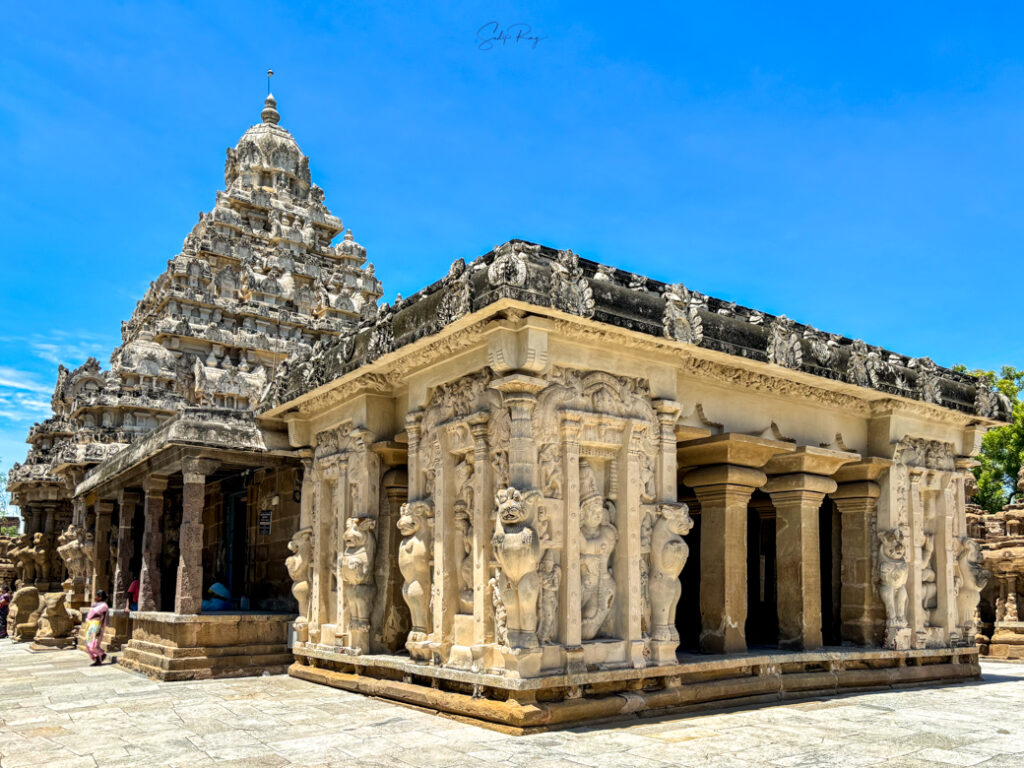
Abutting the vimana are 7 subsidiary shrines called ‘anga alayas’ or limb shrines that centre its south, west, and north walls and radiate from its four corners. Unlike the shrines on the prakaras, the anga alayas are large enough to accommodate more than one person. They were probably used for abhisheka of lingas, portable icons etc.
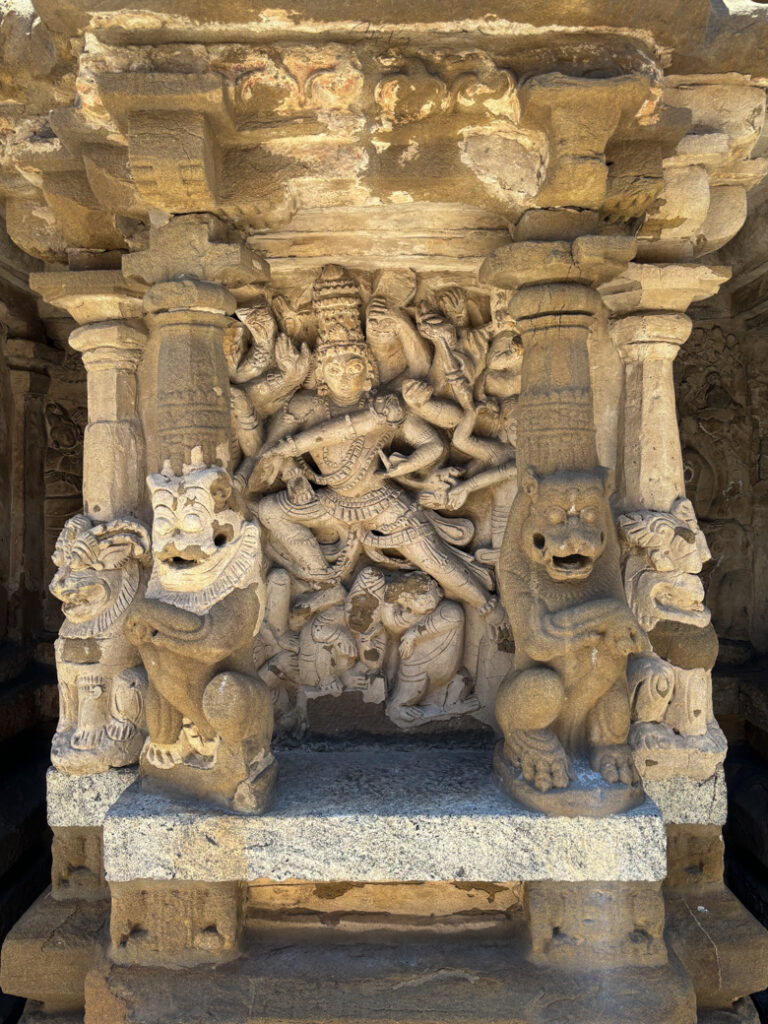
The main building stands on a padabandha adhisthana adorned with lively figures of ganas, bhutas, and various animals.
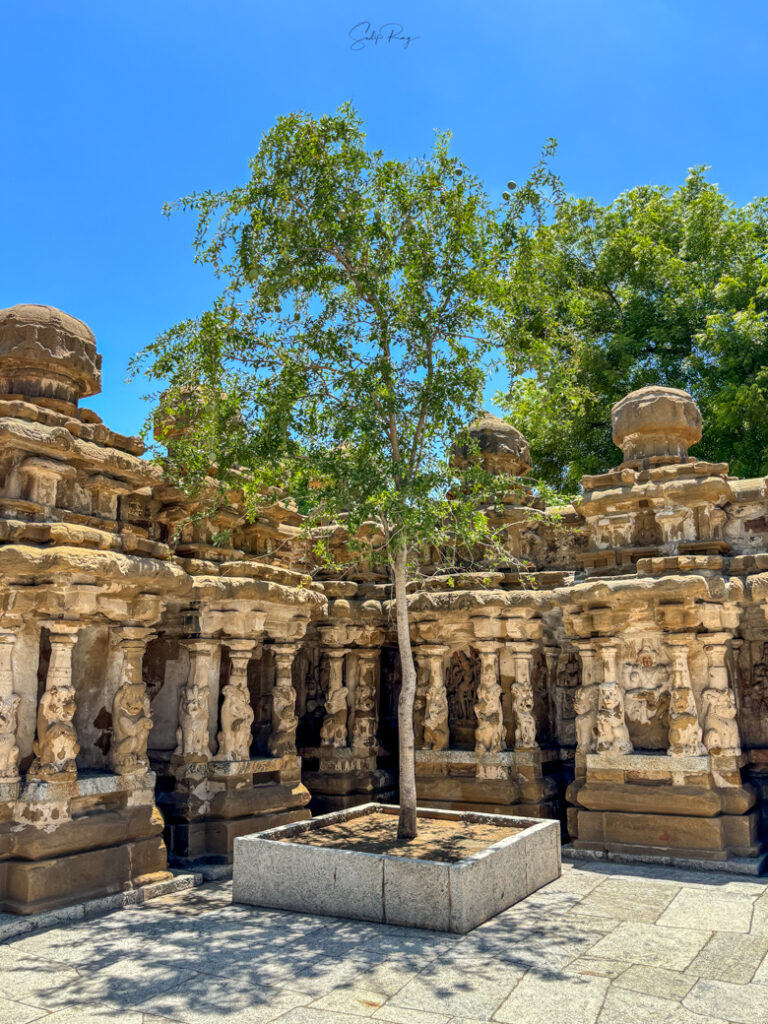
Lion and elephant heads are found among the reliefs in the ‘jagati’ level of the basement. The proliferation of lion motifs allegorically denotes the Pallava kings as revealed by their names such as Simhavishnu, Rajasimha, and Narasimha. On the other hand, the elephant carvings signify the Chalukyas, while the lion is the Pallavas.
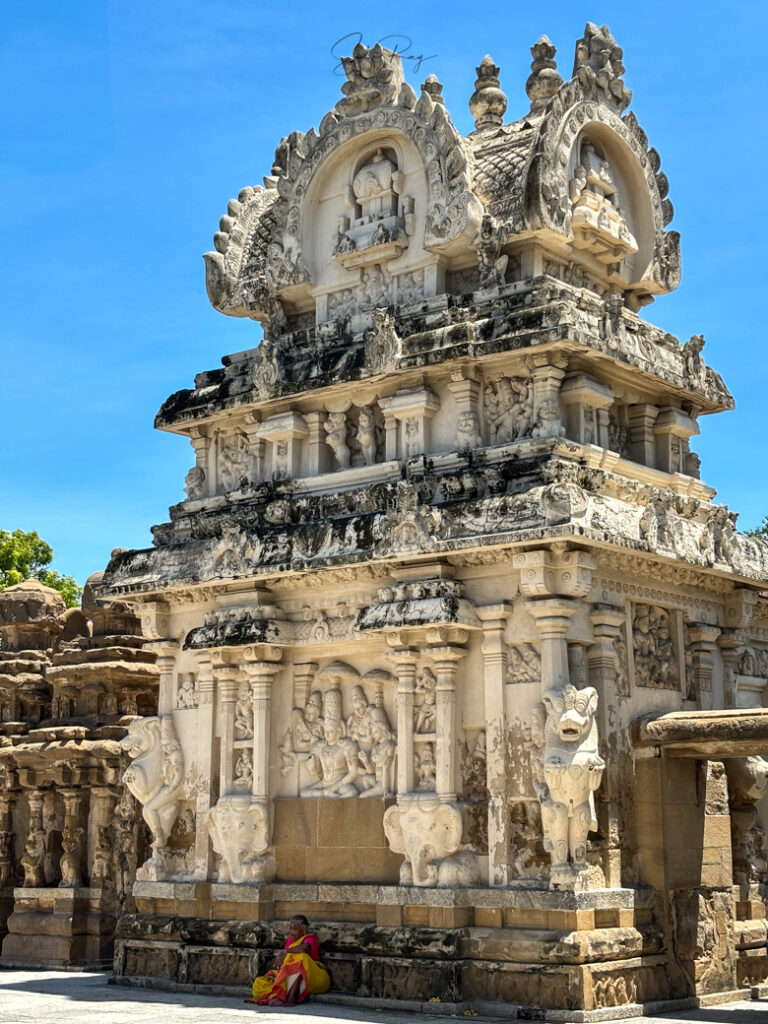
The Mahendravarmesvara Temple lies on the eastern flank of the Kailasanatha Temple complex. Here, two sets of eleven related images are considered to represent Ekadasa Rudras and eleven Pallava kings are treated equally as Rudras. It also accommodates Siva lingas superimposed on the back wall by the anthropomorphic Somaskanda.
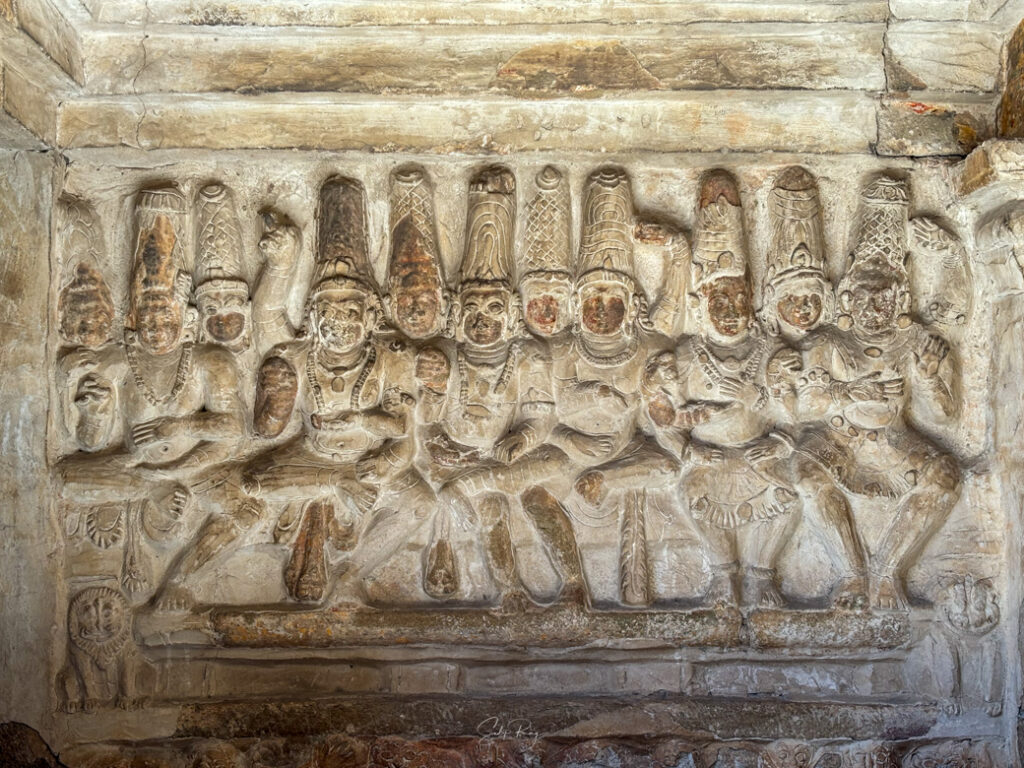
Sculptures of the Kailasanathar Temple:
The outer walls of the Kailasanathar Temple are embossed with sculptures which are monumental in scale. They represent the most refined artistic excellence in the corpus of Pallava art.
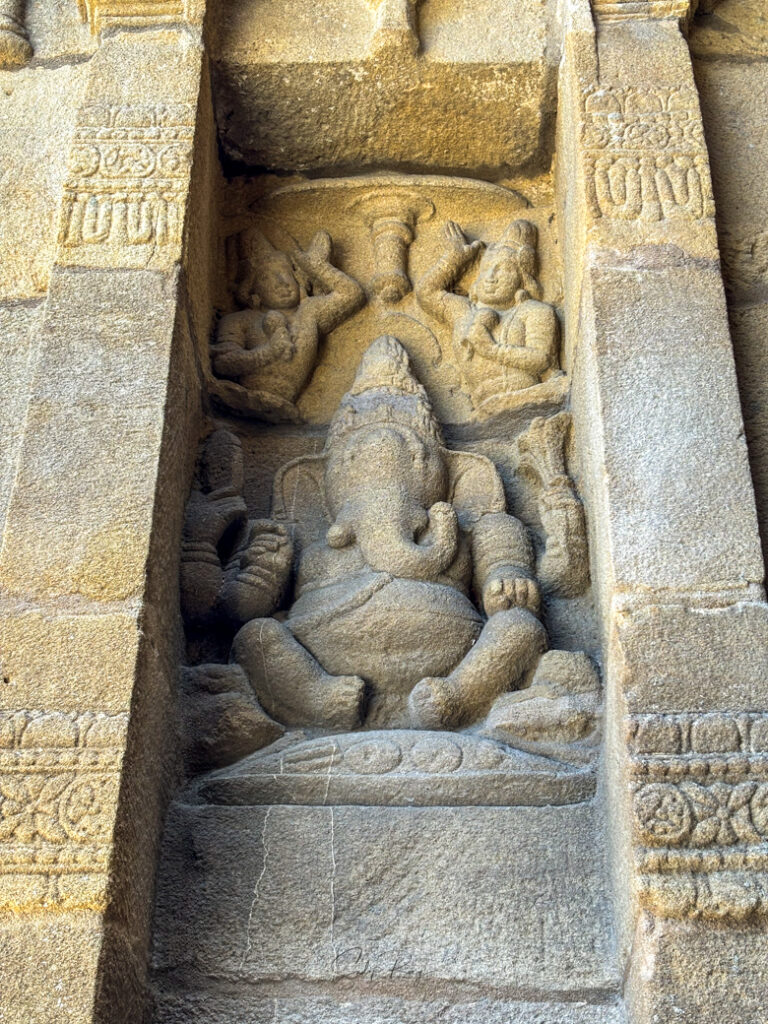
An interesting pattern is observed while deeply analysing the assembling of the sculptures of divine figures. While the sculptures on the northern wall depict ‘amangala’ or inauspicious themes, those on the southern walls portray ‘mangala’ or auspiciousness. It signifies that life on this earth is played both on ‘mangala’ and ‘amangala’ threads. Both the northern and southern walls are symmetry theme-wise. If you go clockwise around the temple, you will come across the ‘mangala’ motifs, which symbolize the ‘samsara’ and continuity of life. On the contrary, if you walk anti-clockwise, the carvings on the north depict asceticism and the transcendence of life. It further signifies that ‘bhoga’ and ‘tyaga’ are complementary to one another. One cannot exist without the other. Such illustrations of the sculptures are indeed intriguing.
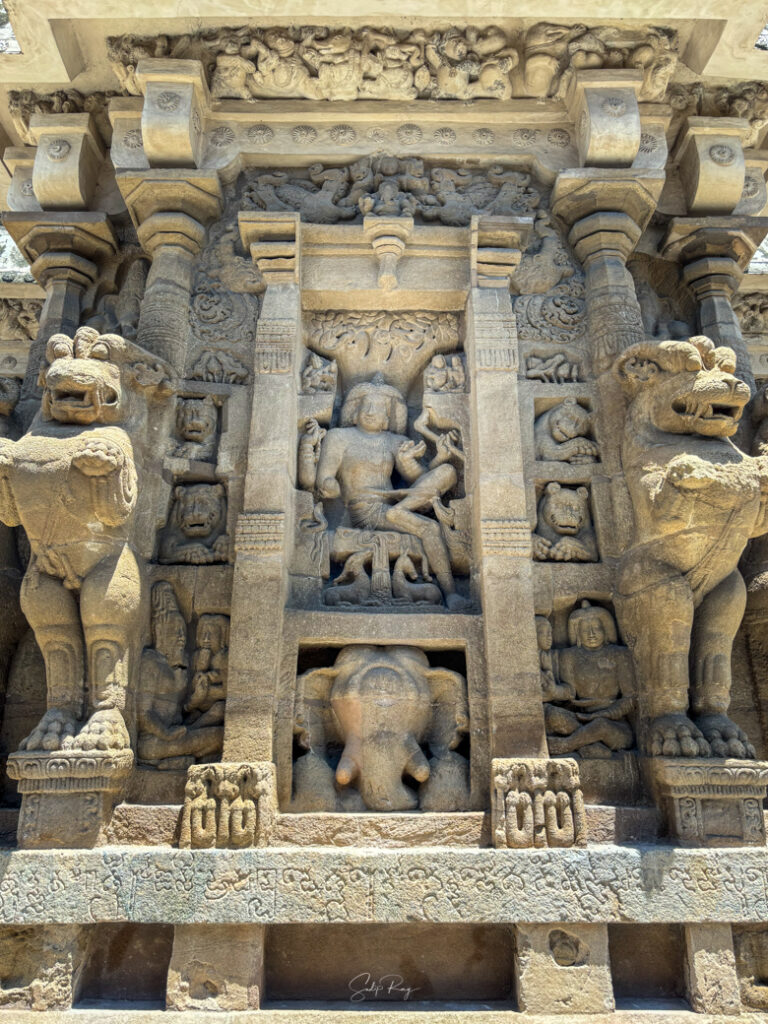
On the south, there is Siva as Uma – Mahesvara with Varaha raising the linga and flanked by Brahma and Vishnu, Siva as Dakshinamurti, Siva as Lingodbhava, and Siva as a ‘guru’. The figures on the south have softer contours, lively postures, and in most cases face one another. Male and female figures are also sculpted together. The figures face south, contain stories of seduction and virility, symbolise continuity and samsara, and are exoteric in content.
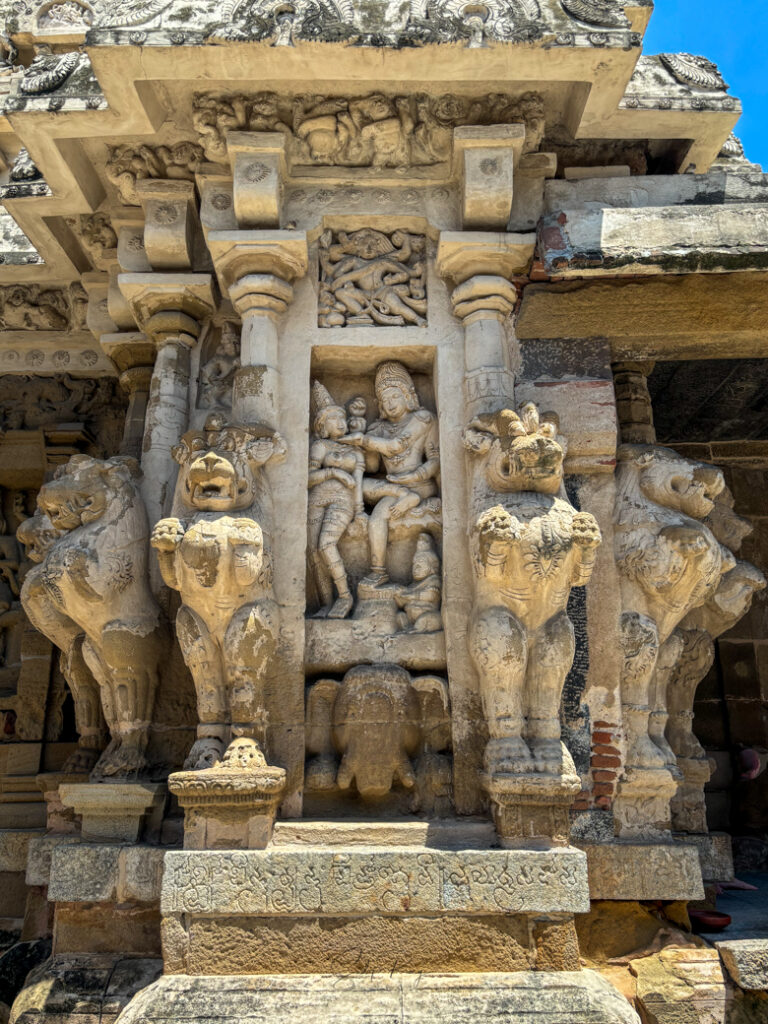
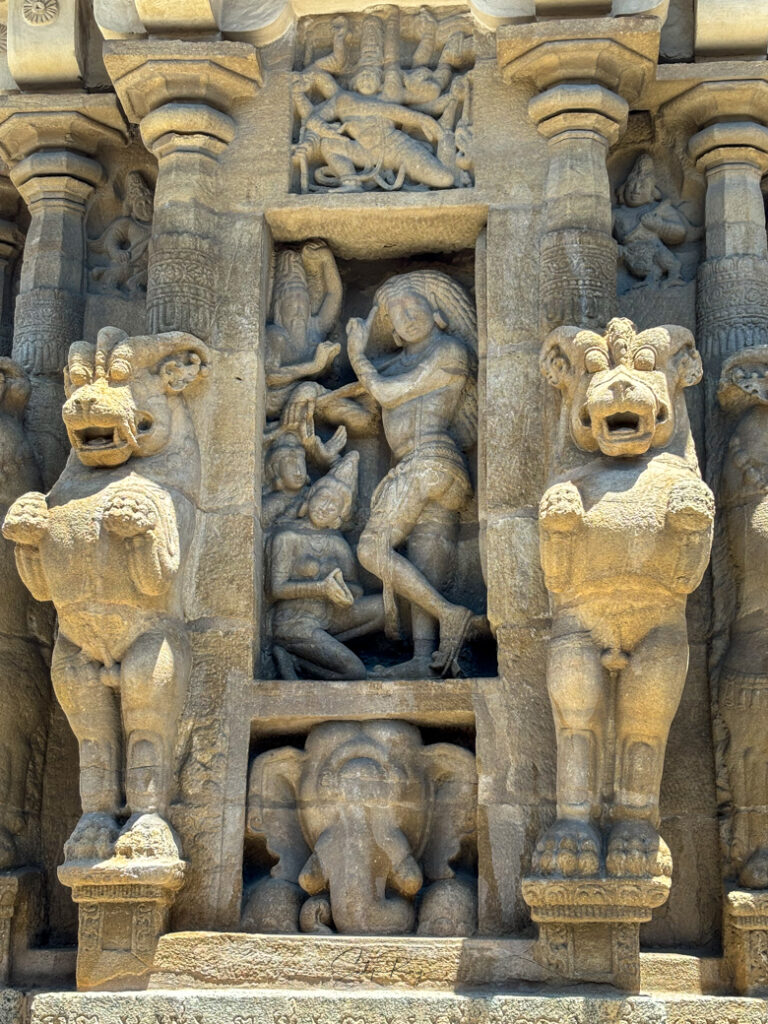
The northern wall is embroidered with Siva as Tripurantaka flanked by three ganas, Durga, Bhairavi, Kaushiki, and Jyestha, Durga as Mahisasuramardini, Bhikshtana, and so on. Contrary to the southern wall, the sculptures on the north have angular contours and sharp features. Male and female figures are carved separately and face away from one another. The figures facing north, contain stories of restraint and inviolability, symbolise asceticism and transcendence, and are esoteric in content.
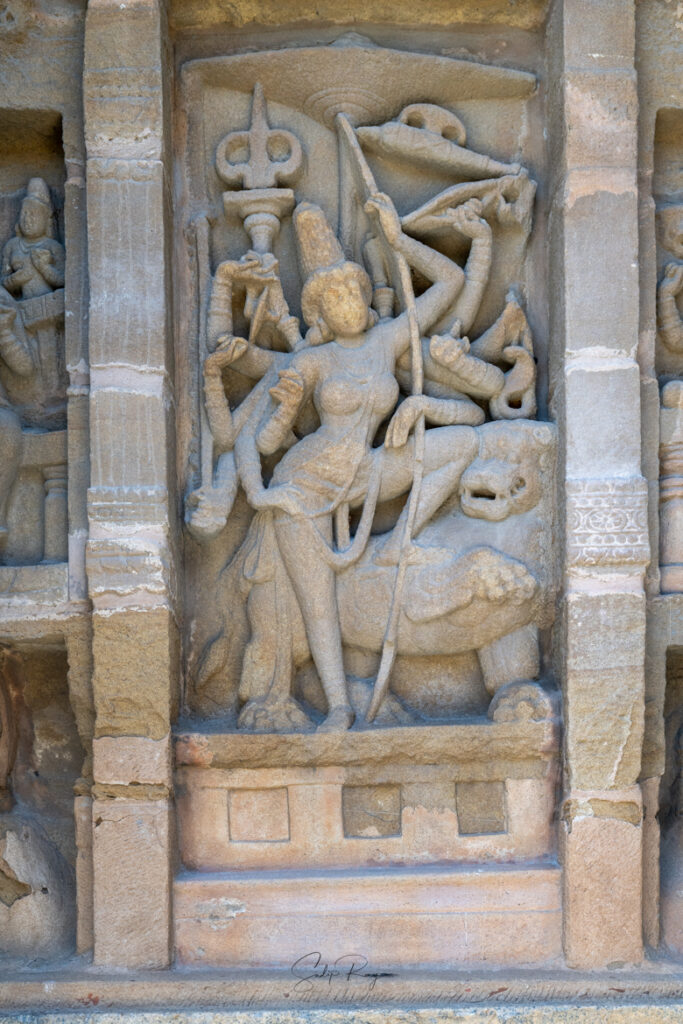
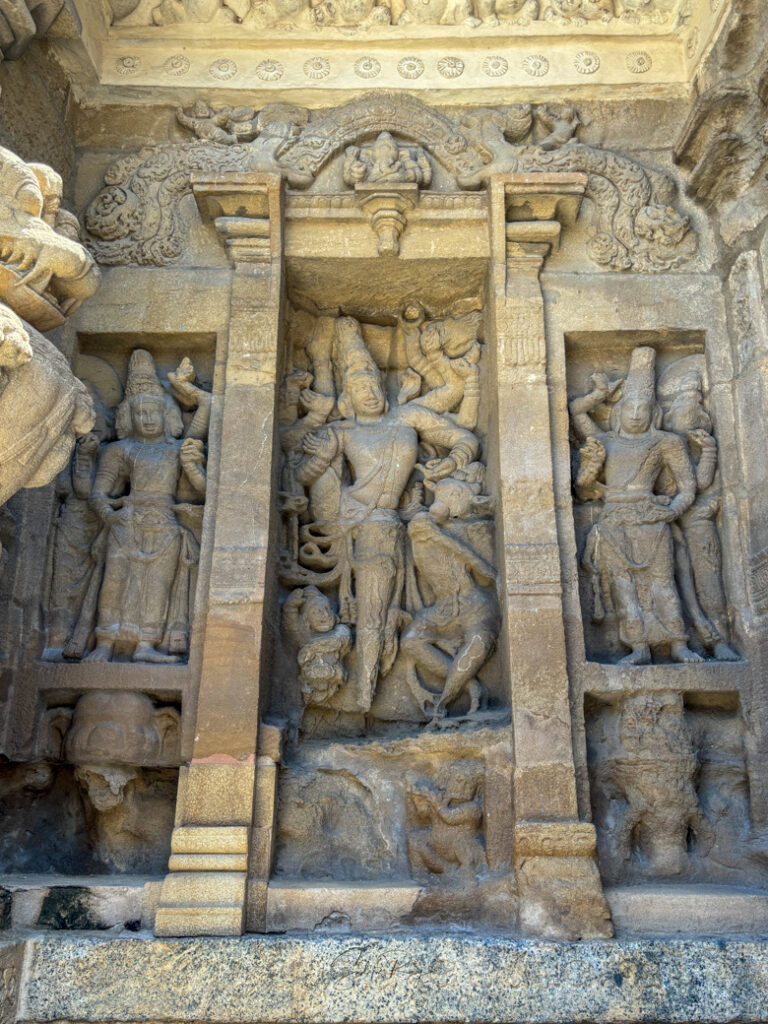
The west wall has Shiva in the form of Sandhya Tandavamurti and Urdhava Tandavamurti and flanked by ganas in dancing poses as also Brahma, Vishnu, Nandi, and Parvati. The exterior faces of vimana have images of Somaskanda, and Siva in Samahara Tandava. In the inner walls of the circumambulatory passage, there is a galaxy of images of Durga, Skanda, Garudaudha Vishnu, Narasimha, Trivikrama, Siva severing the 5th head of Brahma, Daksha Yagnya, Gangadhara, Brahma and his consort, Vishnu with Bhudevi and Shridevi, and so on.
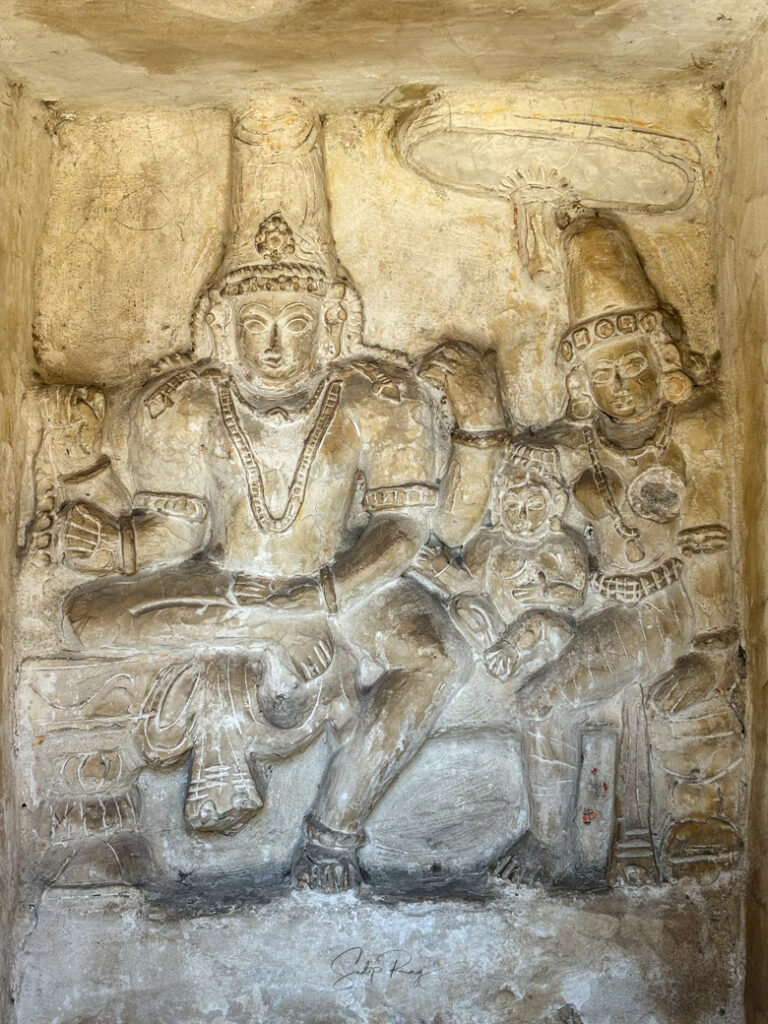
It is quite fascinating to note that, with the innovation of the Kailasanathar, Siva is brought into being through a narrative sequence that moves from the beneficent ‘yogi’ to the vanquisher of enemies. Indeed, it symbolizes the principle of kingship – a king should strive for continuity, and virility, and thus establish his legacy also the king should be courageous, fearless against his enemies, and maintain vitality through asceticism.
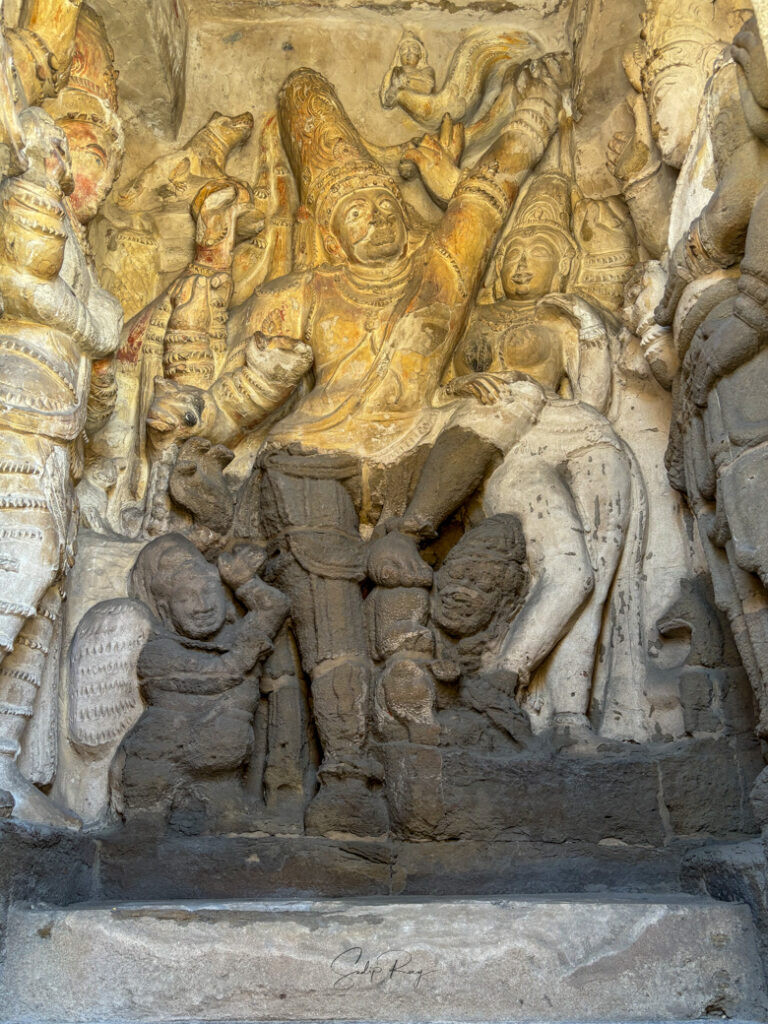
Though the representation of Siva dominates the sculptural compilation of Kailasanathar, 25 images of Devi are identified – four on the mukhamandapa, four in southern devakulika, three on southern devakostha or niche, and nine on northern devakulikas. The iconographical variables are Jyestha, Durga, Sarasvati, Lakshmi, Matrikas etc.
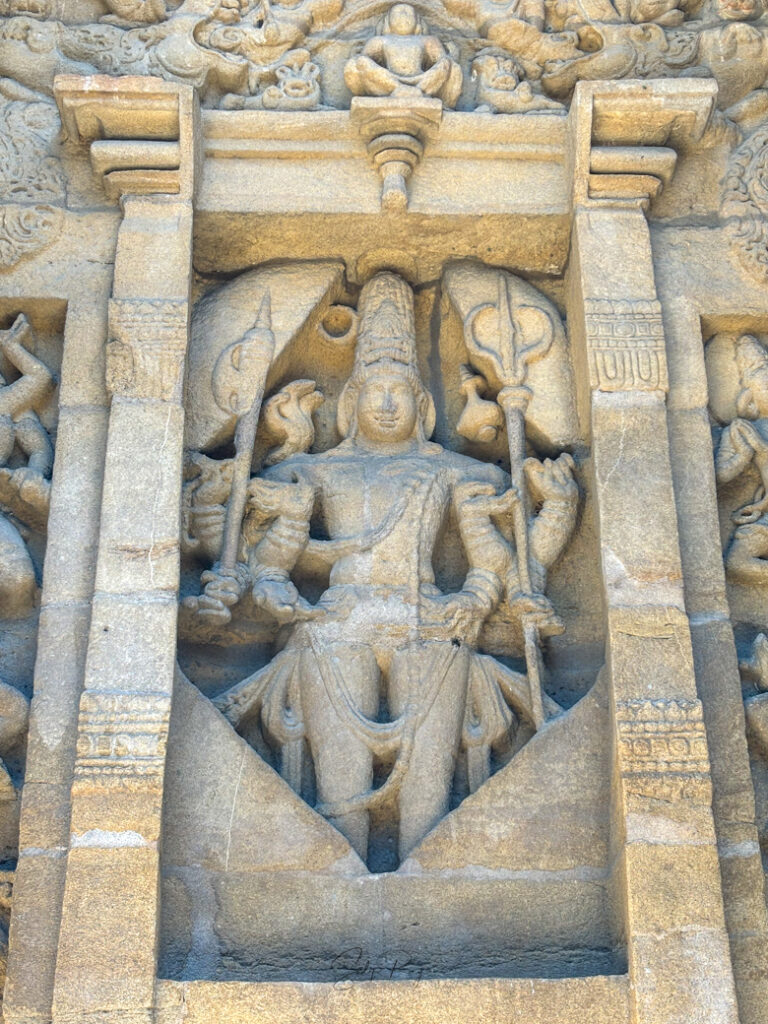
Inscriptions of Kailasanathar Temple:
The basement mouldings of the prakara’s inner face carry Rajasimha’s one hundred ‘biruda’ or eulogies. The inscriptions show that though Rajasimha was still ruling, he was willing to liberate himself by assimilating with Siva.
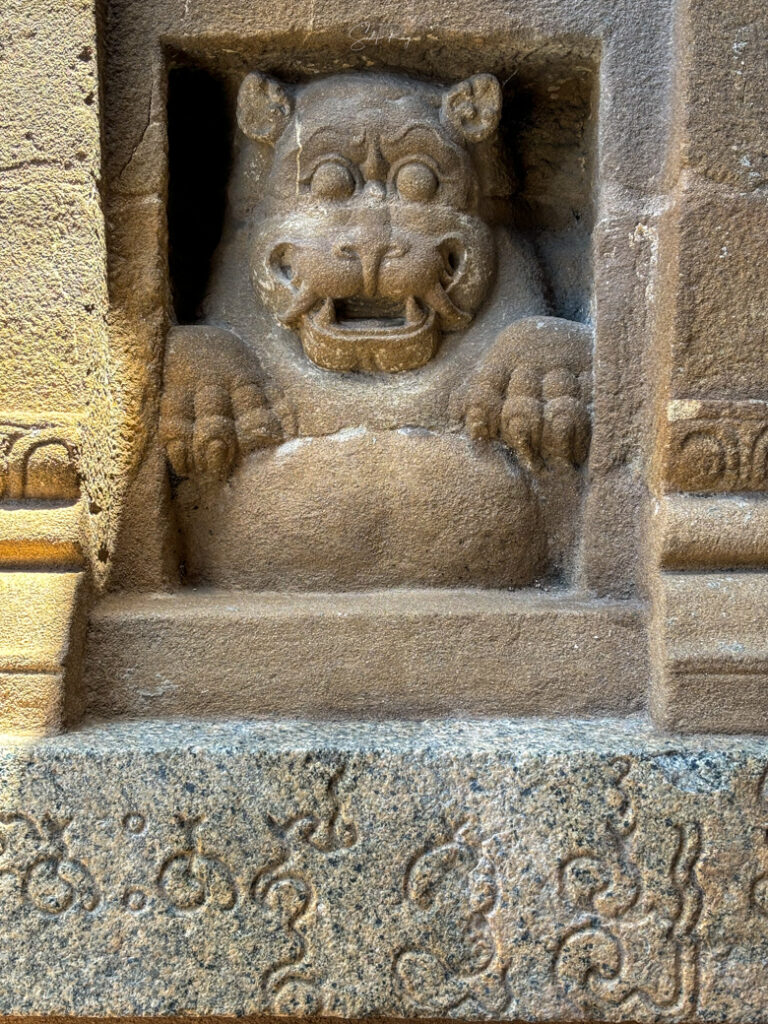
Similar to the sculptures, the inscriptions here also follow a pattern. In the clockwise movement, the inscriptions are simple and declarative characterized by eulogies of the previous Pallava kings. Whereas in the counterclockwise direction, the inscriptions are elliptical and poetic with tricky connotations in Sanskrit.
‘Devakulika’ in the Kailasanathar Temple complex:
The entire temple complex is surrounded by a wall fitted with 58 small shrines called ‘devakulikas. Each house has an image in its sacred chamber like Somaskanda, Gangadhara, Vishnu, Brahmasirascchedaka, and so on. The recurring theme of Somaskanda in the ‘devakulikas’ represents the desire for a male successor and means continuity. The Somaskanda sculptures are like prayers of the king and the queen so that every royal family resembles the divine family.
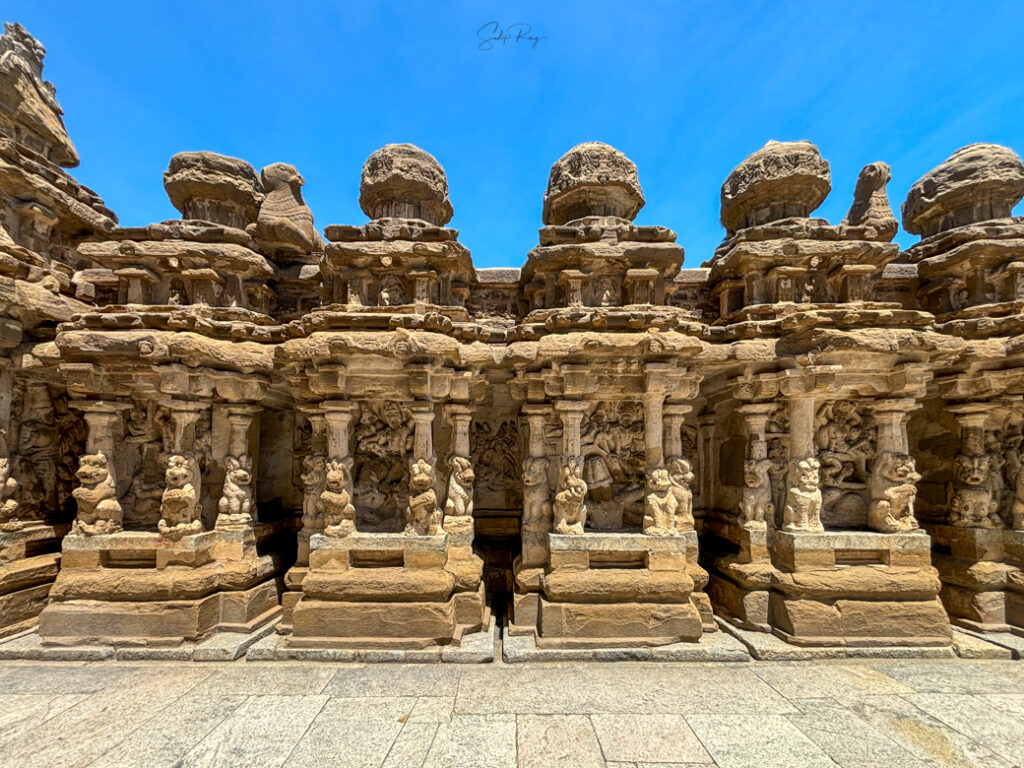

Flanking a low gopura on the eastern side of the complex are 6 east-facing devakulikas to the north and two to the south. As per the inscriptions, the 3rd and 5th shrines to the north of the entry were gifts of Rajasimha’s mother and wife respectively.
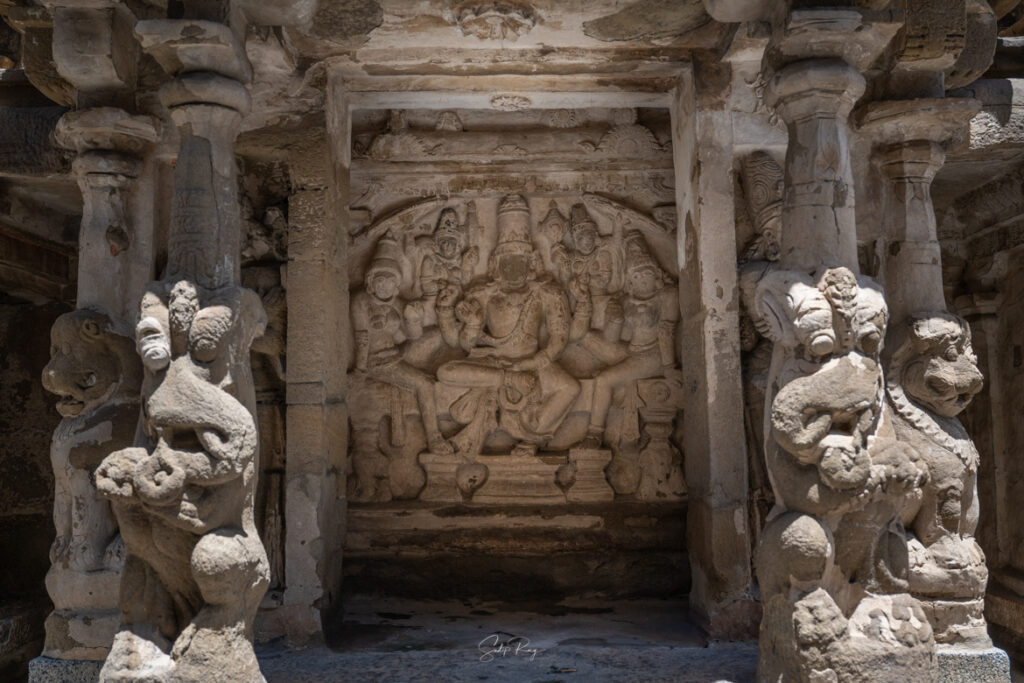
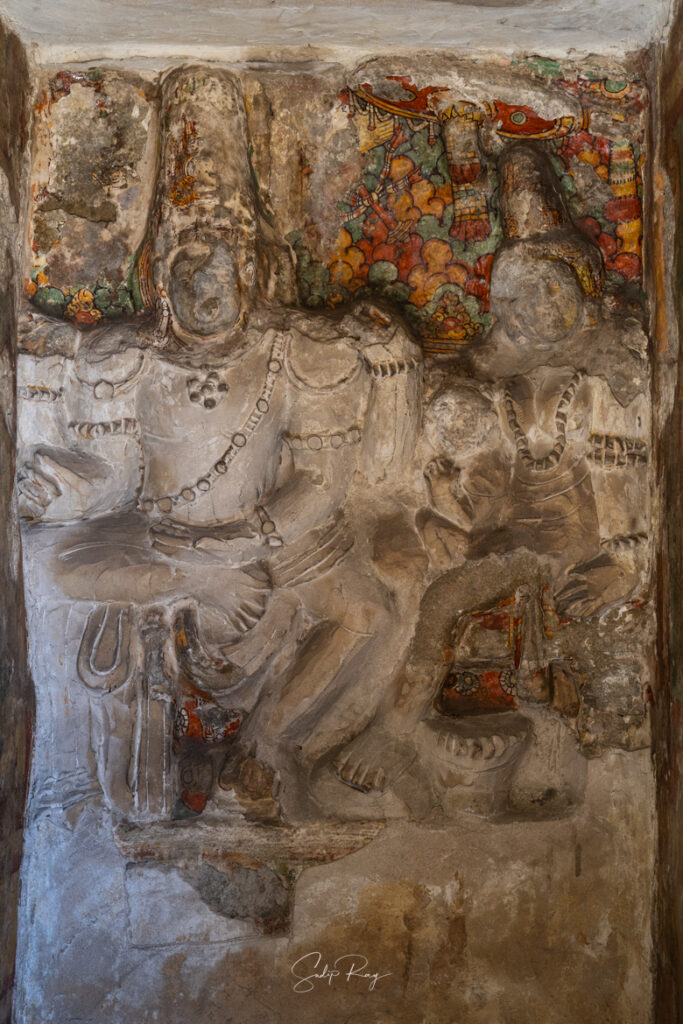
Important FAQs:
- Where is Kanchipuram located?
Kanchipuram is located 75 km away from Tamil Nadu’s capital, Chennai.
How can I reach Kanchipuram?
By train: As many as 16 trains ply between Chennai and Kanchipuram. You can check their schedule here.
By bus: Lots of buses from Mahindra City bus stop in Chennai travel to Kanchipuram on a daily basis.
By air: The nearest airport is Chennai. From Chennai, you can easily reach Kanchipuram by train, bus, or by hiring a cab at your convenience.
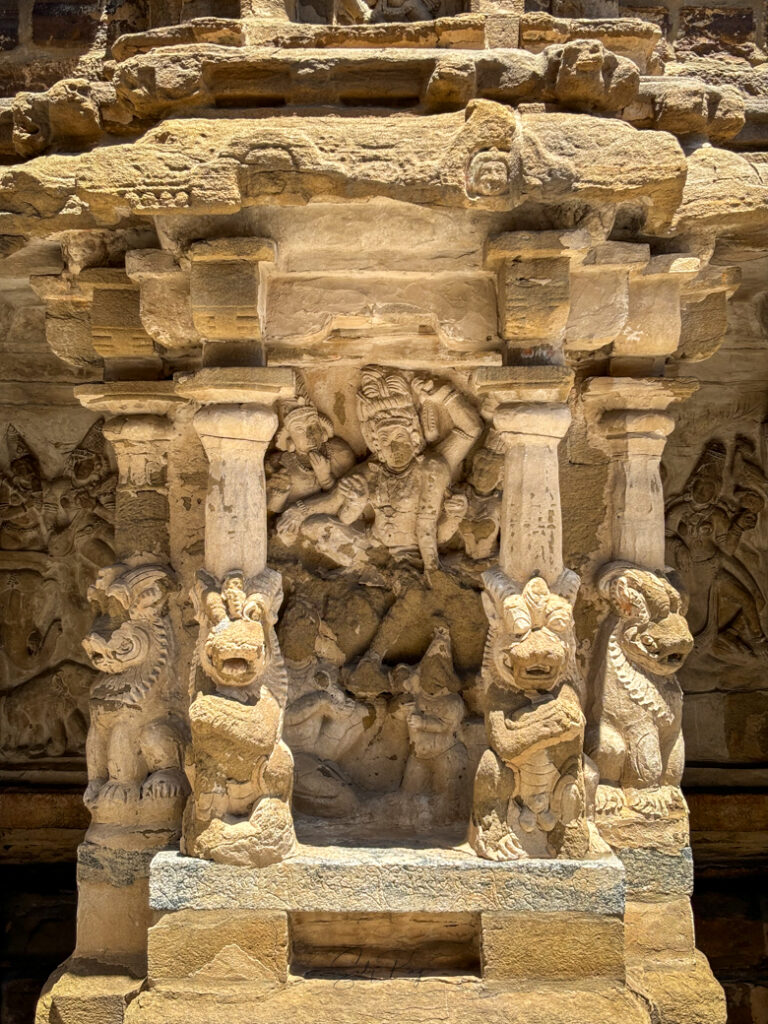
Where can I stay in Kanchipuram?
Being a popular pilgrimage centre, Kanchipuram offers various options for accommodation. We stayed at the centrally located Shree Shakti Residency. Some other top-rated hotels are TTDC Hotel Tamilnadu – Kancheepuram, Regency Kanchipuram, and Nitheesh Residency.
Where to eat in Kanchipuram?
Popular chain restaurants of Tamil Nadu such as Nithya Amritham and Saravana Bhavan have branches in Kanchipuram. Also, try the iconic Kovil Idli of Kanchipuram, which is offered as ‘prasada’ at Varadaraja Perumal and Vaikuntha Perumal Temples.
What is the best time to visit Kanchipuram?
October to March is ideal for visiting Kanchipuram.
When does the Kailasanathar Temple open?
Despite being an ASI monument, the temple opens at 9 AM. We made the mistake of visiting it around 6-30 AM only to find the gates under lock and key. The temple remains open till noon. It reopens at 4 PM.
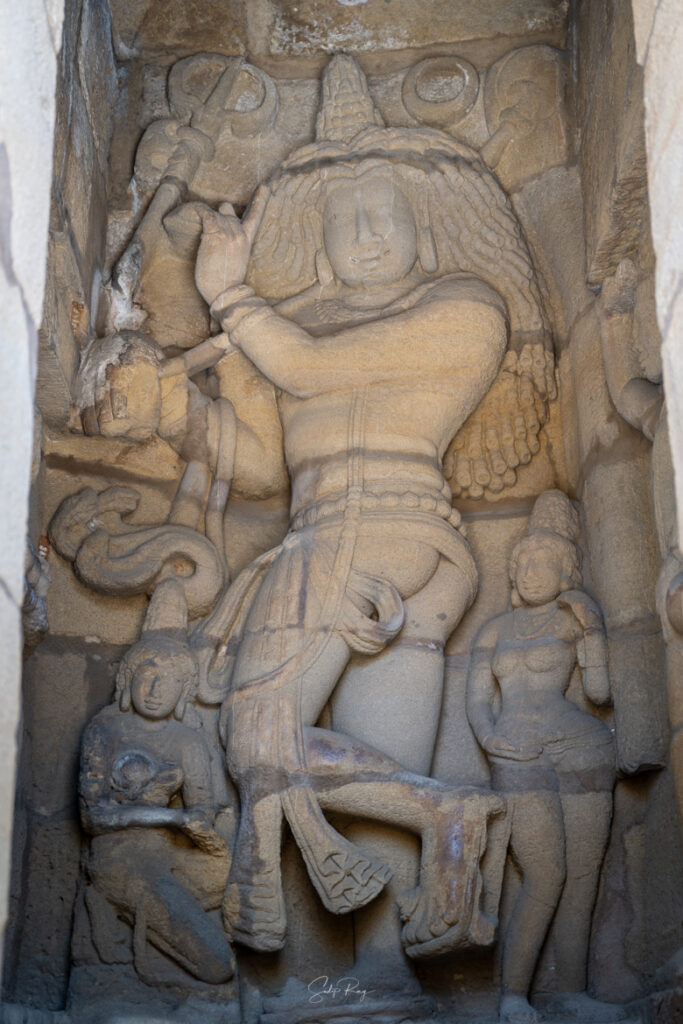
Is any entrance fee required for the temple?
No entrance fee is required to enter this temple.
Is there any dress code for entering the Kailasanathar Temple?
There is no strict dress code. But it is an active temple, it is wise to put on a modest dress that covers your hands and legs.
What are the other temples in Kanchipuram?
Apart from these four temples, you can also visit Ekambaresvara Temple, Kamakshi Amman Temple, Vaikuntha Perumal Temple, Varadaraja Perumal Temple, Shri Chitragupta Swamy Temple, and Shri Ashtabhujakara Perumal Temple,
